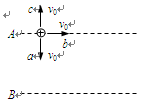阅读理解
Japanese high school students either walk or ride bicycles if the distance is not too great. In other cases, students must take public buses and trains. After junior high school, students attend schools based on their high school entrance examination scores. So some students travel a great distance to attend the school.
◆________
The school day begins at 8:30. Then students assemble in their homeroom classes for the day's studies. Each homeroom has an average of 40-45 students. Students stay in their homeroom classrooms for most
of the school day. Only for physical education, laboratory classes, or other subjects requiring special
facilities(设备) do students move to different parts of the school. Between classes and at lunchtime,
classrooms can be noisy, lively places. Some schools may have a cafeteria(自助餐厅), but most do not.
In most schools, students bring a box lunch from home, prepared by the mother in the early morning hours.
Japanese students spend 240 days a year at school, 60 days more than American students. Students in high schools take three years' each of the following subjects mathematics, social studies, Japanese, science, and English. Other subjects include physical education, music, art, and moral(道德的) studies. All the
students in one grade level study the same subjects. Given the number of required subjects, electives
(选修科目) are few.
◆Afterschool Activities
Club activities take place after school every day. Students can join only one club, and they rarely
change clubs from year to year, so the clubs are relatively stable. Clubs are made up of sports clubs
(baseball, soccer, judo, kendo, etc.) and culture clubs(English, broadcasting, science, etc.). New students usually are encouraged to select a club shortly after the school year begins in April. Clubs meet for two
hours after school each day and many clubs continue to meet during school vacations.
1. Most Japanese high school students often have their lunch________.
A. in restaurants
B. in school cafeterias
C. at home
D. in homeroom classrooms
2. Students in the USA go to school________days a year.
A. 180
B. 200
C. 240
D. 300
3. The underlined word "rarely" in the fourth paragraph means "________".
A. always
B. never
C. seldom
D. often
4.From the passage we know that________.
A. there are less than 40 students in each class in Japanese high schools
B. students must stay in homeroom classrooms for physical education
C. there are few subjects for students to choose except the required ones
D. there will not be any club activities during school vacations
5. The best subtitle for the second and third paragraphs may be "________".
A. At school
B. In class
C. Subjects
D. Homerooms

 ,说明正电荷受电场力竖直向下,即电场线方向竖直向下,沿电场线方向电势逐渐降低,所以等势面A的电势高于等势面B的电势,选项A对。初末位置相同,电势差相等,根据动能定理有
,说明正电荷受电场力竖直向下,即电场线方向竖直向下,沿电场线方向电势逐渐降低,所以等势面A的电势高于等势面B的电势,选项A对。初末位置相同,电势差相等,根据动能定理有 ,a、b、c三粒子初动能相同,电荷量相同,初末位置电势差相同,所以末动能相等,速度大小选项B对。开始运动后,三粒子电荷量相同,电场强度相同,加速度相同,竖直方向对粒子
,a、b、c三粒子初动能相同,电荷量相同,初末位置电势差相同,所以末动能相等,速度大小选项B对。开始运动后,三粒子电荷量相同,电场强度相同,加速度相同,竖直方向对粒子 ,
, ,对粒子
,对粒子 ,
,  ,对粒子c,
,对粒子c, ,开始运动后任意时刻,三粒子竖直方向位移都不会相等,电场力做功都不相等,根据动能定理,开始运动后的任一时刻,a、b两粒子的动能不相同,选项C错。开始运动后的任一时刻,电场力做功不等,电势能不等,选项D错。
,开始运动后任意时刻,三粒子竖直方向位移都不会相等,电场力做功都不相等,根据动能定理,开始运动后的任一时刻,a、b两粒子的动能不相同,选项C错。开始运动后的任一时刻,电场力做功不等,电势能不等,选项D错。